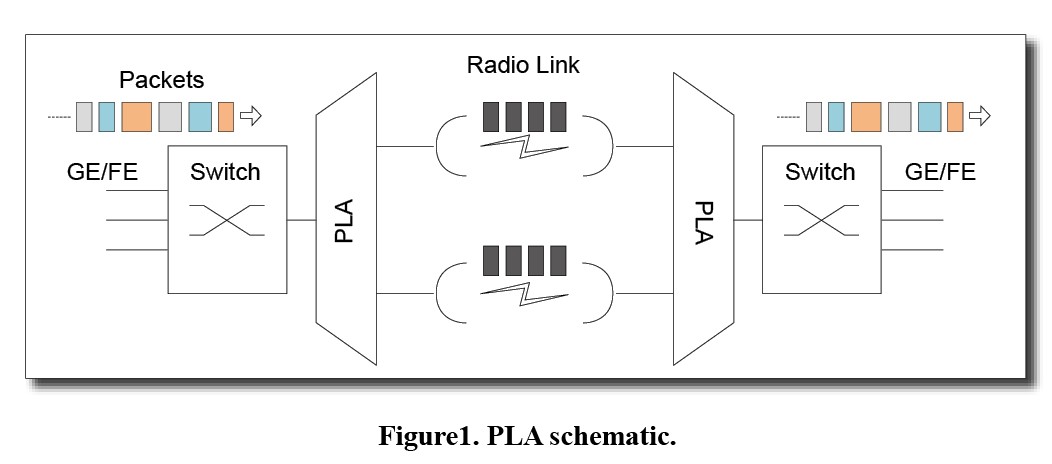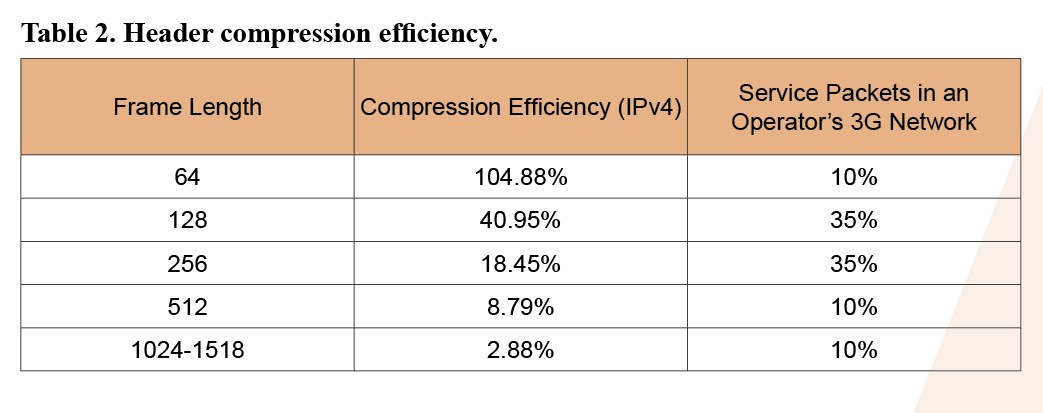LTE-Oriented Microwave Bandwidth Management
As mobile wireless technology evolves from 2G to 3G and LTE, the bandwidth needed for data services has grown exponentially. According to the latest 3GPP technical specifications, the theoretical peak downlink speed of HSPA+ and LTE exceeds 300 Mbps. The current LTE peak downlink speed is 150 Mbps, but if an end site contains three sectors, this may reach 450 Mbps. The peak downlink speed of aggregation sites is even higher at 1 Gbps.
Microwave transmission equipment for mobile backhaul networks is cheap, flexible to deploy, and can facilitate quick networking. Except in North America and China, microwave equipment accounts for 55% to 65% of equipment used in mobile backhaul networks. In some countries, this is more than 75%. However, because microwave transmission is restricted by frequency resources and wireless modulation technology, the current maximum transmission bandwidth of a single carrier is approximately 400 Mbps. This is barely sufficient to meet the service transmission requirements of 3G and LTE aggregation links. Enhancing the efficiency and capacity of microwave transmission is therefore a challenge for microwave manufacturers.
Requirements of Multichannel Microwave Transmission
Large-capacity microwave aggregation links typically use co-channel dual-polarization (CCDP) and cross-polarization interference cancellation (XPIC) technologies to provide two transmission channels for a single carrier. This doubles transmission capacity. In a 56 MHz, 256QAM configuration, the transmission bandwidth of a single carrier can reach 800 Mbps. With link aggregation group (LAG) technology, services are allocated to two channels; however, because the allocation of LAG services is unbalanced and uncertain, the transmission bandwidth cannot be fully utilized. The actual transmission speed in most applications is far lower than 800 Mbps.
If there are 20 base stations with peak capacities of 40 Mbps, the total peak capacity is 800 Mbps after aggregation. The aggregation side has one-hop microwave equipment in a 2 + 2 XPIC configuration to provide two 400 Mbps microwave transmission channels. Ideally, if each microwave channel is shared by 10 base stations, the microwave bandwidth can meet transmission requirements. With LAG load balancing, a hash algorithm is used to directly switch packets to a microwave channel according to the IP or media access control (MAC) addresses. The hash algorithm is fixed, so packets from the same IP or MAC address can only be mapped to the same microwave channel. In the LAG configuration, service allocation is greatly related to the distribution of IP and MAC addresses, which are difficult to distribute evenly. As a result, one microwave channel may have insufficient bandwidth, and the other may have excess bandwidth that is wasted (Table 1).

Theoretically, the more base stations there are, the greater chance that services will be equally allocated. However, the demand for data-service bandwidth is increasing, and microwave aggregation links can cover fewer base stations. In the LTE era, the capacity of a single base station will reach 450 Mbps, so the aggregation link will be able to cover only three or four base stations at most. In this situation, LAG cannot meet the requirements of multichannel microwave transmission.
Dynamic Service Allocation with PLA Technology
Physical link aggregation (PLA) solves the problem of uneven allocation of multichannel microwave transmission. An adapter module is added between the switch module and microwave channels to bundle microwave channels and load-balance services (Fig. 1). When data packets reach the PLA module, they are cached and re-divided into smaller fragments. Depending on the idle state of each microwave channel, these fragments are dynamically and evenly allocated to multiple microwave channels for transmission. Then, the received fragments are recovered at the other end to be the original data packets. From a user perspective, multiple microwave channels are equivalent to a physical transmission channel.

The basic difference between PLA and LAG is the mode of load balancing. LAG uses hash mapping, and load balancing is affected by IP and MAC address distribution and the number of base stations rather than the bandwidth of links. PLA is used for balancing according to the idle bandwidth state of each wireless link. Regardless of the number of base stations or type of service, microwave transmission bandwidth can be fully used, and bandwidth waste in multichannel microwave transmission can be eliminated.
Enhancing Microwave Transmission with HC Technology
Header compression (HC) can further enhance transmission efficiency of microwave links. When Ethernet header fields―including interframe gap, preamble field, MAC address, VLAN tag, and IP head―appear repeatedly, they are replaced by shorter fields and are recovered at the other end. A shorter frame length provides higher compression efficiency (Table 2).

There are a certain proportions of data packets with varying frame lengths in the mobile backhaul network. Table 2 shows these proportions in an operator’s 3G network. From the compression efficiencies of different frame lengths shown in Table 2, the average compression efficiency in an operator network is 32.45%. If the bandwidth of the microwave link is 800 Mbps, up to 1.06 Gbps can be achieved with header compression. If user datagram protocol (UDP) header compression or IPv6 service is enabled, compression efficiency is further improved.
Conclusion
Multichannel microwave transmission is an inevitable trend for wireless technologies in large-capacity mobile backhaul aggregation sites. PLA + HC bandwidth management can be used for microwave multichannel load balancing and can greatly enhance microwave transmission efficiency. The solution will be a requisite feature of large-capacity microwave equipment in the future. ZTE NR8000 microwave products have taken the lead by introducing PLA + HC bandwidth management with 2 + 0, 2 + 2 and 4 + 0 configurations. This is an optimal solution for transmission at 3G and LTE large-capacity aggregation sites.